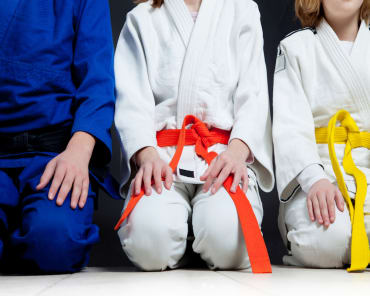
No-Gi Brazilian Jiu-Jitsu (BJJ) has gained immense popularity in recent years, offering practitioners a dynamic and versatile approach to grappling without the traditional kimono (gi). Whether you're new to BJJ or looking to expand your skills beyond gi training, understanding the fundamentals and benefits of no-gi BJJ is essential for enhancing your martial arts journey.
What is No-Gi Brazilian Jiu-Jitsu?
No-Gi BJJ, as the name suggests, is Brazilian Jiu-Jitsu practiced without the traditional gi or kimono. While gi training involves grips on the fabric of the gi for control and submissions, no-gi BJJ focuses on techniques that rely on clinches, body positioning, and control without the aid of clothing grips. This style emphasizes fluid movement, agility, and adaptability in grappling scenarios.
Key Differences from Gi Training
The absence of a gi in no-gi BJJ influences several aspects of training:
Grip Fighting: Without gi grips, practitioners focus on clinch-based grip fighting using wrist control, collar ties, and underhooks to establish control and execute techniques.
Speed and Fluidity: No-gi BJJ tends to be faster-paced due to the reduced friction and constraints of the gi, requiring practitioners to rely more on agility and quick transitions.
Submission Variations: Some submissions are more challenging without gi grips but can be adapted with different control points and techniques such as the guillotine choke, arm triangles, and leg locks.
Benefits of No-Gi BJJ Training
Enhanced Adaptability: No-gi training develops adaptability by requiring practitioners to adjust their techniques and strategies based on the unique challenges posed by opponents without the gi.
Improved Grip Strength: While gi grips are absent, practitioners develop grip strength through alternative grip fighting techniques and strategies.
Applicability to MMA: No-gi BJJ skills are highly transferable to mixed martial arts (MMA) due to the focus on clinch work, positional control, and submissions without gi grips.
Fitness and Conditioning: No-gi BJJ often involves more dynamic movements and cardiovascular demands, contributing to improved overall fitness and conditioning.
Techniques Emphasized in No-Gi BJJ
No-gi BJJ techniques include:
Takedowns: Focus on wrestling-style takedowns such as double legs, single legs, and body locks.
Guard Passing: Techniques for navigating and passing the guard without gi grips, utilizing pressure, and speed.
Submissions: Chokes, joint locks, and leg locks adapted for no-gi scenarios, emphasizing control and timing.
Training and Competition
No-gi BJJ training sessions typically involve drills, positional sparring, and live rolling (randori). Training partners wear rash guards and grappling shorts to minimize friction and simulate real-world grappling scenarios. Competitions in no-gi BJJ follow similar rules to gi competitions but without the gi-related grips and submissions.
Conclusion
No-Gi Brazilian Jiu-Jitsu offers a dynamic and versatile approach to grappling, focusing on fluidity, adaptability, and practical techniques applicable in both sport and self-defense contexts. Whether you're looking to enhance your overall grappling skills, prepare for MMA, or simply enjoy a faster-paced training experience, no-gi BJJ provides valuable opportunities for growth and mastery on the mats. Embrace the challenges and benefits of no-gi training to expand your martial arts journey and elevate your skills in Brazilian Jiu-Jitsu.






